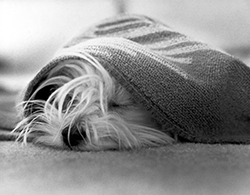
From the Drycleaning and Laundry Institute
Keeping Blankets Looking & Feeling Great
Blankets are essential items in every home. Blanket composition ranges from synthetic to natural fibers; from non-woven to woven fabrics; and from neutral colors to exotic prints.
Caring for (non-electric) Blankets
At some point in time, most blankets will need to be cleaned. It is always best to follow the manufacturer’s instructions when cleaning blankets. Although the Federal Trade Commission does not require care labels on blankets, care instructions are usually provided on a permanent label or temporary hang tag. In most cases, blankets should be machine washed on a gentle cycle in cold to warm water and line dried or tumble dried low.
Most blankets can also be dry cleaned (except for electric blankets, which can be damaged by drycleaning).
Wool is Special
Wool blankets can be either of a woven or knit fabric construction and require special precautions when cleaning. Hot water or high drying temperatures may cause wool blankets to shrink and feel harsh and stiff. If the care label suggests, machine wash only in cold water on a gentle cycle with mild detergent, and line dry or tumble dry low.
Even though you may follow the recommended care instructions, some wool blankets may still experience shrinkage.
Industry standards for shrinkage in blankets allow as much as six percent after five washings. For example, a wool blanket that is 81 x 108 inches in size can shrink as much as 4 1/2 inches in one direction and 6 1/2 inches in the other direction, resulting in a blanket that is 76 1/2 x 101 1/2 inches in size.
Q: Does frequent drycleaning shorten the life of a garment?
A: On the contrary, frequent cleaning prolongs the life of a garment. Not only do stains set with age, making the garment unwearable, but ground-in dirt and soil act as an abrasive, like sandpaper, causing rapid wear of fibers. Also, insects are attracted to soils such as food, beverages, feces, perspiration, and oils from hair on the clothes and will cause further damage.
Research was conducted by the Department of Clothing and Textiles at the University of North Carolina at Greensboro in cooperation with the School of Textiles at North Carolina State System, which was developed in Japan. The research showed that the various drycleaning processes have no negative effect on the properties of wool in men’s suiting fabrics.




